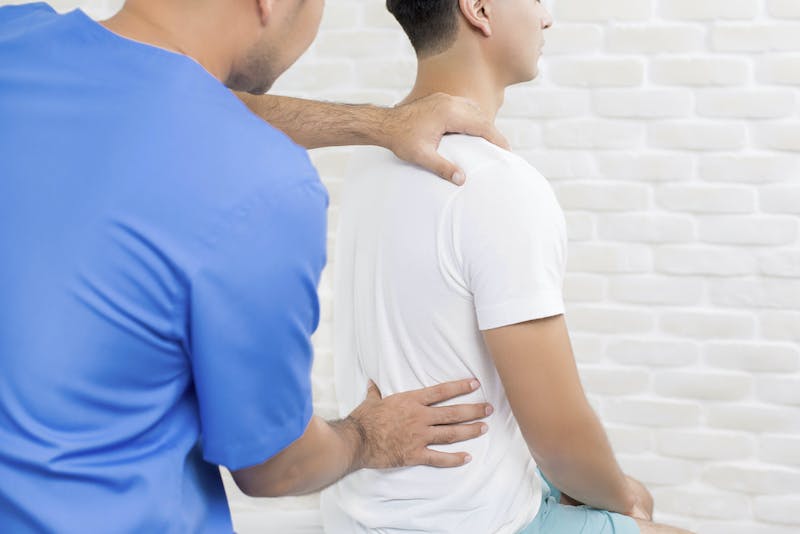Living with chronic pain can feel like an uphill battle. It affects your mood, your ability to work, and even simple daily activities. If you’re searching for effective chronic pain treatment options beyond medication or invasive procedures, there’s exciting technology making a real difference: Deep Tissue Laser Therapy.
At Bacci & Glinn Physical Therapy, we utilize advanced treatments like laser therapy, including the state-of-the-art LightForce® system, to help patients find lasting relief. But what exactly is it, and how does it work?
Shining a Light on Healing: The Science Behind Laser Therapy
Deep Tissue Laser Therapy might sound complex, but the concept is quite straightforward. It uses specific wavelengths of light energy that penetrate deep into tissues without causing damage. Think of it like photosynthesis for your cells – just as plants use sunlight for energy, your body’s cells can use this focused light energy to kickstart their natural healing processes.
This process, called photobiomodulation, essentially gives your cells a boost. It helps to:
- Reduce inflammation and swelling
- Decrease pain signals
- Improve blood circulation to the injured area
- Accelerate tissue repair and cell growth
It’s a non-invasive, drug-free approach that works with your body to promote healing from within. The treatment itself is often described as a gentle warming sensation, making it a comfortable experience for most patients.
Who Can Benefit from Deep Tissue Laser Therapy?
One of the great things about laser therapy is its versatility. It’s proven effective for a wide range of musculoskeletal conditions that cause chronic pain. We often recommend it for patients dealing with:
- Chronic Low Back Pain
- Neck and Shoulder Pain
- Arthritis (Osteoarthritis and Rheumatoid)
- Sciatica
- Tendonitis (like Tennis Elbow or Golfer’s Elbow)
- Plantar Fasciitis (heel pain)
- Bursitis
- Hip Pain
- Sports Injuries
- Repetitive Stress Injuries
Research supports Deep Tissue Laser Therapy, like the LightForce® system we use at Bacci & Glinn. A study on chronic low back pain found combining High-Intensity Laser treatments with specific exercises provided the greatest pain relief and functional improvement. This combination worked better than laser alone or exercise with a placebo laser (Alayat et al., 2014), confirming the value of integrating laser therapy with exercise in our patient treatment plans
Take our patient, Pat T., for instance. She struggled with persistent lower back and hip pain that significantly impacted her life. After undergoing LightForce therapy sessions as part of her physical therapy plan, Pat experienced complete relief. She’s now able to maintain her progress and stay active with the exercises prescribed by her therapist. Stories like Pat’s highlight the game-changing potential of this advanced treatment.
Integrating Laser Therapy into Your Recovery Plan
Deep Tissue Laser Therapy is often most effective when used as part of a comprehensive physical therapy program. It complements other treatments like manual therapy, targeted exercises, and education to address the root cause of your pain and improve your overall function and mobility. Our experienced therapists will assess your specific condition to determine if laser therapy is the right fit for your unique needs.
Is Deep Tissue Laser Therapy Right for You?
If you’re experiencing chronic pain, deep tissue laser therapy could be an excellent option. It’s a non-invasive, scientifically backed approach that targets the source of your pain and inflammation to promote natural healing. Whether your pain is from an old injury, arthritis, or wear and tear, our skilled physical therapists at Bacci & Glinn Physical Therapy are here to help you find relief and improve your quality of life using advanced treatments like LightForce therapy.
Contact our Visalia office at (559) 733-2478 or our Hanford office at (559) 582-1027 and take the first step toward feeling better.
Reference:
Alayat, M. S., Atya, A. M., Ali, M. M., & Shousha, T. M. (2014). Long-term effect of high intensity laser therapy in the treatment of patients with chronic low back pain: a randomized blinded placebo-controlled trial. Lasers in Medical Science, 29(3), 1065-1073. Access the study abstract here: https://pubmed.ncbi.nlm.nih.gov/24178907/



